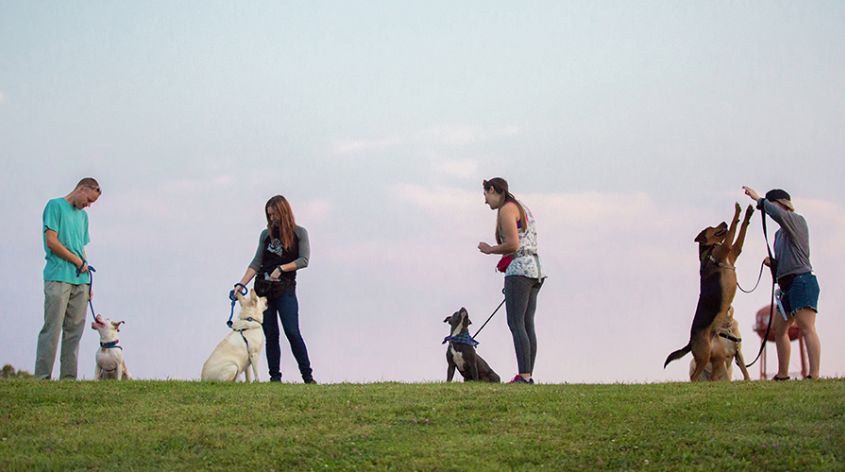Barking up the Franklin County Dog Shelter’s tree one year after outbreak

Mob on a Mission
Kimberly Rottmayer is part of a clever clique of vocal volunteers at the Franklin County Dog Shelter and Adoption Center, a role that shouldn’t be as controversial as it has become. It was barely a year ago when a distemper outbreak resulted in the euthanizing of nearly a hundred dogs, a heart-wrenching decision that polarized animal advocates and shelter officials. Procedures and protocols have been thoroughly reviewed and revised since then, but those aren’t the only things that have changed.
“Being a volunteer dog walker at the shelter can be a very positive experience, working to help dogs get adopted. But it can be emotionally trying,” admitted Rottmayer. “You also get to know the dogs that have been there for months that may only get one walk a day.”
For perspective, imagine living in a cage or kennel and getting only 20 minutes a day to walk, play, and just be a dog? (Even inmates at a maximum-security prison get an hour in the yard.)
“Over time, you can see the dogs change—become less interactive, less adoptable,” she explained. “After the distemper incident, lots of volunteers quit coming. Those of us who keep coming do it for the dogs. We’re often the only advocates they have.”
Volunteers are tasked with walking dogs to maintain that human connection and mitigate the behaviors that typically come from extended isolation. There’s a class requirement, but students, retirees, flight attendants, and the like who love canines, but maybe don’t have the schedule or time to commit to a dog full-time, fill the ranks.
Then there’s the “Shelter Mafia”.
“It was just a hashtag I came up with to describe the shelter volunteers,” Cindy Renner said modestly. She has been a volunteer for years and witnessed the fall off in dog walkers first-hand.
“We have a great group of new and old volunteers who would do anything for our shelter dogs.”
Among the changes made by the shelter is a new intake process, keeping dogs together that come in on the same day to control exposures, and providing vaccinations preventively. But dogs also go through the system faster now. That sounds good, but it inevitably means dogs that aren’t adopted, go to “rescue” status more quickly, making them less likely to be adopted before they’re put down.
The shelter also started sharing posts from its volunteers, which is quite a turnaround following some unflattering hashtags that emerged in the wake of last year’s tragedy.
Metrics aren’t perfect measurements, but in the past five years, the number of dogs that have been euthanized at the shelter has fallen by roughly 75 percent, from 6,275 in 2011 to 1,617 in 2016. More than 10,000 dogs a year still find their way into the shelter. But that number has been trending down as well—and volunteers are an undeniable part of that, even before the Shelter Mafia emerged to employ its strong-arm, social media tactics.
“There’s probably a more scientific name for it, but we call it deterioration. The longer a dog is at the shelter, the less social they become. So we have to become more social,” Rottmayer noted. “You see it happening, but you also see the difference we can make. That’s what keeps us coming back, what gets us up in the morning, even in the snow. Every day, every picture, every post—we know everything we do helps a dog find a home.”
BROUGHT TO YOU BY



